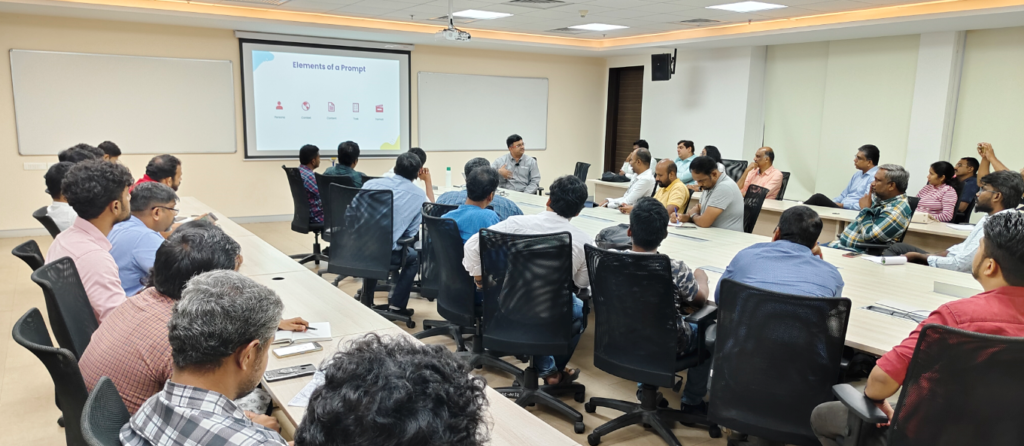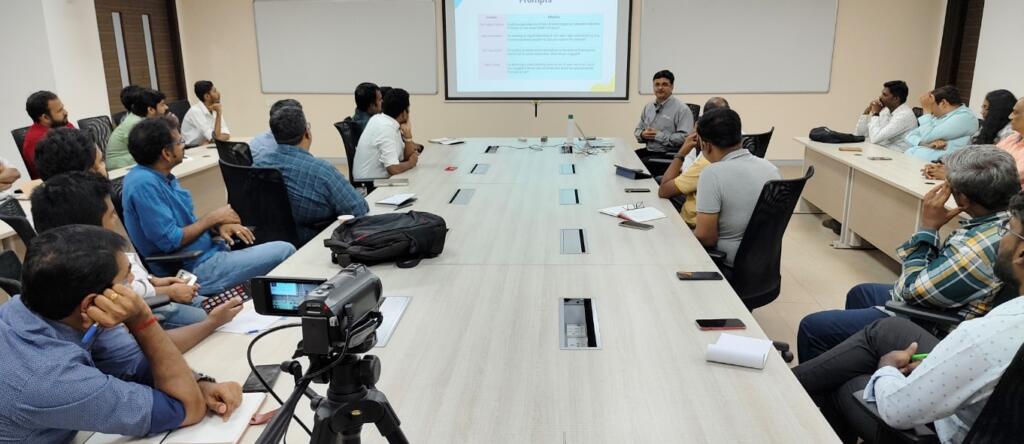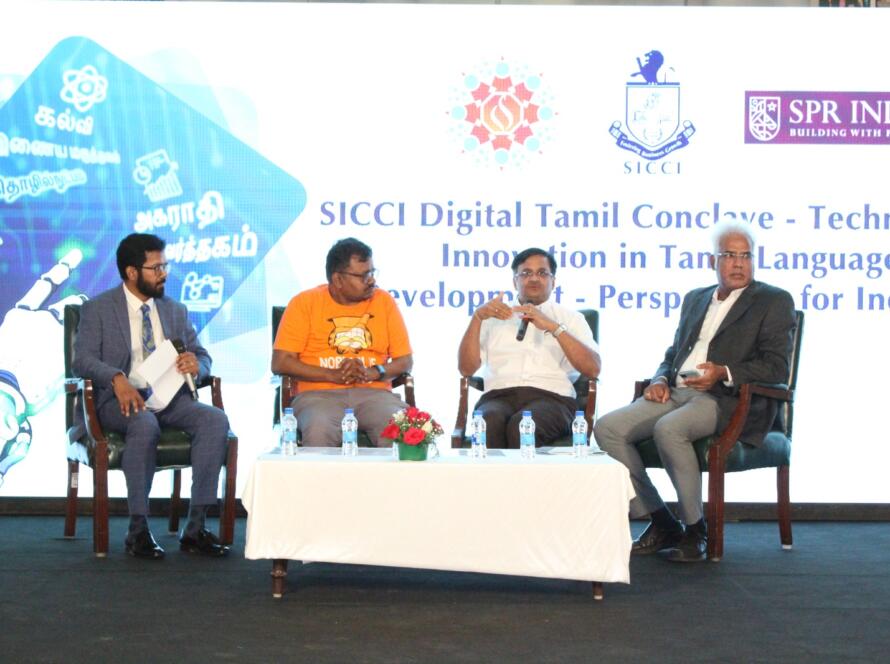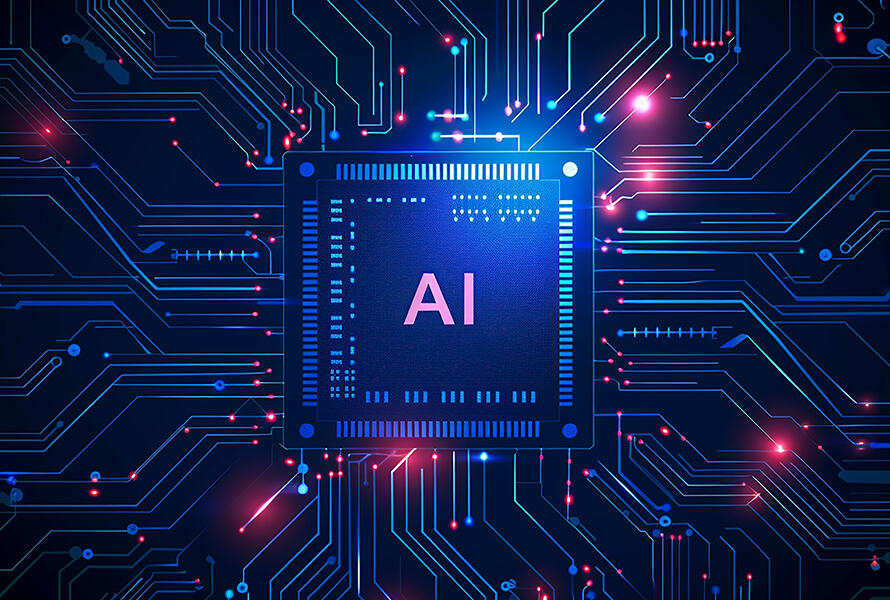Last Friday at the IIT Research Park Sarabhai Hall, and with many more connected via Zoom, I shared my insights on Generative AI at a TiE Chennai event. The session, titled “Generative AI and Prompt Engineering for Productivity,” reflected the audience’s growing familiarity with AI tools such as ChatGPT and Microsoft Copilot, showcasing how these tools have evolved from mere technological curiosities to essential business assets.
Watch the full recording of my AI Session here!

In my presentation, I described Generative AI as a technology that uses vast datasets to produce text, images, and code. This capability is something I’ve seen improve significantly over time, becoming more reliable and integral in handling complex tasks that were traditionally done manually.
I discussed how Generative AI has improved business workflows, especially in client communication, market research, education, and customer support. My personal experience with these technologies has shown how they can adapt to diverse needs, offering time savings and enhanced connection with the customers.
Choosing the right tools that integrate well with existing systems is crucial. For instance, Microsoft Copilot is best in Microsoft-centric environments, while Google’s Gemini fits well in Google Workspace setups. These are observations from my own experience with their integration benefits.
A key part of my talk focused on the art of crafting effective prompts. This skill, which I have refined over time, is crucial because the quality of AI-generated outputs heavily depends on the precision of the input. It’s about asking the right questions to elicit the most useful results.

I also discussed operating open models like LLAMA3, Google Gemma, and Microsoft Phi3 locally on personal computers. This hands-on approach has helped me understand their potential and limitations without depending solely on cloud services.
Additionally, I addressed the legal landscape surrounding the use of Generative AI, exploring copyright issues related to training data and the outputs generated. I explained the terms and conditions set by AI providers of these foundation models regarding the use of user-generated prompts and outlined the limits of liability and indemnification.
In closing, I shared a vision where technology serves as a partner in enhancing human capabilities. My goal was to inspire the audience to see Generative AI not as a replacement for human effort but as a tool to amplify our potential, enabling greater efficiency and creativity.
This discussion was more about applying these technologies practically to solve real-world problems rather than marveling at AI’s capabilities. I encourage everyone to explore the full potential of these technologies and join me in future events where we will continue to delve into the evolving landscape of GenAI advancements.



